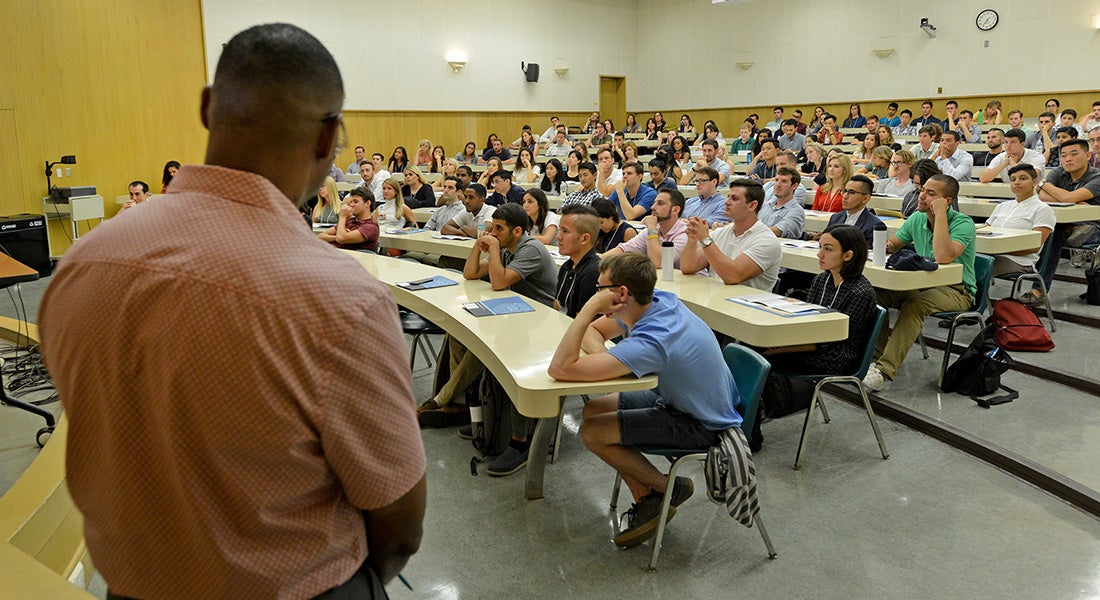Lawmakers introduced 563 anti–Critical Race Theory measures in 2021 and 2022
241 of them have been adopted, according to new UCLA Law report

Lawmakers introduced 563 anti–Critical Race Theory measures in 2021 and 2022
Key takeaways
- A UCLA Law study found that in 2021 and 2022, government officials introduced 563 measures aimed at restricting teaching about race and racism; 241 of those measures have been adopted.
- Nearly half of the proposed measures borrowed language from the now-rescinded Executive Order 13950, which was issued by former President Donald Trump in 2020.
- More than 90% of the measures targeted instruction at K–12 schools.
UCLA researchers have found that in 2021 and 2022, federal, state, and local government officials introduced 563 measures aimed at restrict access to truthful information about race and systemic racism.
The study of anti–Critical Race Theory measures (PDF) was conducted by CRT Forward, an initiative of the UCLA School of Law’s Critical Race Studies Program. Researchers drew information from more than 30,000 news articles to reveal the impact of former President Donald Trump’s Executive Order 13950, which banned certain “divisive concepts” in federal trainings.
While the executive order was rescinded in January 2021 by President Joe Biden, in the past two years, anti–Critical Race Theory measures have been introduced in 49 states — Delaware is the only state in which no such measures have been introduced, the study found. And 241 of the measures have been adopted.
Critical Race Theory is the study of systemic racism in law, policy and society. It has come under fire from local school boards, state legislatures and even federal-level inquiry, resulting in attempts — many of them implemented — to restrict its teaching and, more broadly, discussions about race and racial inequality.
“While anecdotally we’ve known that the attack on Critical Race Theory was happening, this is the first time we’ve actually had the data to fully understand the depth and breadth of this coordinated political campaign,” said LaToya Baldwin Clark, a UCLA Law professor and co-author of the report.
Researchers identified five key trends:
- Nearly half of the measures lawmakers introduced borrowed phrasing — in particular the so-called “divisive concepts” language — from the now-rescinded Executive Order 13950.
- Anti–Critical Race Theory measures were pervasive but unevenly distributed across the states. Most of the state-level measures were in those states that went to Trump in the 2020 presidential election, but local measures were introduced in equal numbers in states that went to Trump, those that went to Biden and those in which the vote was nearly even.
- The measures were overwhelmingly, although not exclusively, aimed at teaching in public schools. Over 90% of the measures targeted K–12 institutions. The remaining 10% of measures target colleges and universities, state and federal agencies, contractors, private businesses and nonprofits.
- Among the measures targeting K–12 schools, over 70% focused on regulating teachers’ behavior and curriculum.
- Among legislation, withholding funding and issuing fines are the most common consequences of non-compliance.
The report analyzes data from CRT Forward’s flagship resource, the CRT Forward Tracking Project, the only database that comprehensively tracks anti–Critical Race Theory measures — including legislation, school board policies, gubernatorial executive orders, and state attorneys general opinions — at the federal, state and local levels.
The report also includes a spotlight on such measures in California, as an example of anti–Critical Race Theory measures in predominantly Democrat-controlled states. As of December 31, 2022, seven of 11 measures introduced in California school districts had been adopted, affecting approximately 110,000 students statewide.
According to the report, government officials nationally are on a pace to introduce as many anti–Critical Race Theory measures in 2023 as they did in either 2021 or 2022. CRT Forward will continue to track the activity, and the researchers plan to develop additional resources for advocates, journalists, academics and the public.
“While this report looks to data from the recent past, its findings are integral to ensuring those committed to racial justice can chart a path forward that will allow everyone — especially our children — to have tools for addressing the most pressing racial and social justice issues of our time,” said Taifha Alexander, the CRT Forward project director and a co-author of the report.
CRT Forward is funded in part by grants from Lumina Foundation’s Racial and Equity Fund and the Rosenberg Foundation. The views in the report do not necessarily represent those of the Lumina Foundation or Rosenberg Foundation, their officers or their directors.
The report’s other authors are Kyle Reinhard, a CRT Forward fellow; and Noah Zatz, a UCLA professor of law and the architect of the tracking project.
Hear more from an expert panel
On April 12, the Critical Race Studies Program presented their findings in a webinar titled, The Miseducation of CRT: Tracking the Attacks on Critical Race Theory.
The program was moderated by UCLA law professor Cheryl Harris, with UCLA law professor LaToya Baldwin Clark, Columbia Journalism School Dean Jelani Cobb and ACLU senior staff attorney Emerson Sykes as panelists.
To watch the recording, visit the law school's YouTube page here.
Media Contact
Annabel Adams
adams@law.ucla.edu